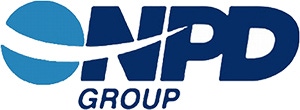With the back-to-school season accounting for 35 percent of the $11.8 billion in yearly supply sales (and nearly half which come from the U.S.), The NPD Group has unveiled and influencers for this year’s back-to-school season.
April 6, 2018

Social media, school start dates, shopping lists and more to impact this year’s back-to-school sales.
 With the back-to-school season accounting for 35 percent of the $11.8 billion in yearly supply sales (and nearly half which come from the U.S.), The NPD Group has unveiled and influencers for this year’s back-to-school season.
With the back-to-school season accounting for 35 percent of the $11.8 billion in yearly supply sales (and nearly half which come from the U.S.), The NPD Group has unveiled and influencers for this year’s back-to-school season.
“To the average consumer, back-to-school shopping may seem like a fairly consistent and predictable routine, but for retailers and manufacturers it is an extremely dynamic environment,” says Leen Nsouli, director, office supplies industry analyst, The NPD Group.
First, NPD has found that while consumers are still shopping primarily at brick-and-mortar stores, they are increasingly purchasing supplies online. From July to September 2015, the e-commerce channel gained $90 million in dollar share growth versus brick-and-mortar.
Meanwhile, the shift in school start dates and tax-free holidays will also affect this year’s spending patterns. For example, U.S. cities such as New York City and Seattle start school later in the year, while Atlanta and Phoenix are among the earliest to start. This year, there will be two less shopping days between the Fourth of July and Labor Day holidays, which NPD also believes will impact sales.
At the same time, says NPD, there will be differences in the handful of states that offer tax-free days during July and August. This year there will be nine less days by state compared to last year, and several other states have shifted their tax-free days.
The NPD Group also found that school lists and supply packs influence back-to-school purchases. For example, a higher percentage of thesauruses are on school lists in the Northeast, and watercolors in the West, according to NPD’s Back-to-School Supply List Database 2015. There is also a regional relevance for school supply packs, which are offered to parents for purchase by the school. According to the NPD’s Back-to-School Monitor 2015 survey, nearly 50 percent of consumers with the supply pack option purchased one for all or some of their children.
Finally, social media will have an effect on back-to-school supply sales.
“Social media engagement has added yet another dimension to every industry and season, and back-to-school is no exception. A perpetual stream of trends on platforms such as Pinterest and Instagram means that teachers and other consumers alike are being influenced in new and different says,” says Nsouli. “This has also helped to put fashion back in function when it comes to supplies; consumers are willing to spend more on aesthetically pleasing or fashionable products.”
Read more about:
The NPD GroupYou May Also Like






